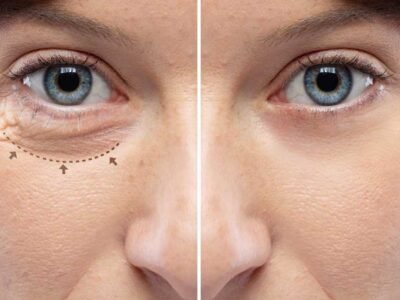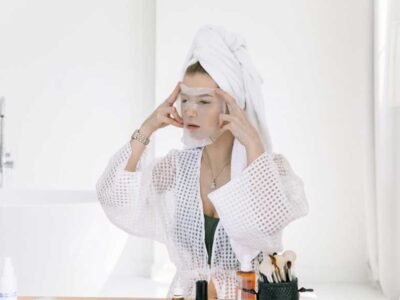
Tried Everything for Your Scalp? These Treatments Might Surprise You
Dealing with scalp issues can be downright maddening, especially when you’ve cycled through product after product and still feel stuck. Itchiness, dandruff, dryness—sometimes even medicated shampoos and fancy treatments just don’t cut it.
Surprisingly, some of the best scalp treatments in Singapore come from unexpected sources—think apple cider vinegar, tea tree oil, or even a good scalp massage to get blood flowing and oils balanced. These options aim to tackle the underlying causes instead of just covering things up for a day or two.
If you’ve already run through all the usual stuff, it might be time to look at professional treatments like scalp facials, light therapy, or prescription solutions that go after specific problems. Sometimes, those specialized approaches finally make a difference.
Innovative Scalp Treatments You Need to Know
Medical science keeps moving forward, and scalp treatments have gotten a lot more interesting than just shampoos or home remedies. There are now technologies and medical techniques that zero in on particular scalp issues.
Prescription-Grade Topicals and Injectables
Dermatologists can prescribe powerful solutions you won’t find at the drugstore. Prescription-strength corticosteroids knock down severe inflammation and itching, especially for conditions like seborrheic dermatitis or psoriasis. Doctors sometimes prescribe minoxidil at higher strengths—up to 15% instead of the usual 5%. This boost can help if you’re dealing with stubborn hair loss that just laughs at regular treatments.
In tough cases, doctors inject steroids right into the scalp’s problem spots, getting the medication straight to where it’s needed most. Topical JAK inhibitors are the new kids on the block for alopecia areata. They work by blocking certain inflammatory signals that drive hair loss, and early results look promising.
Laser and Light-Based Therapies
Low-level laser therapy (LLLT) uses specific light wavelengths to wake up hair follicles. You can now find this tech in clinics and even at home in the form of laser combs or helmets. Some studies say LLLT can actually thicken hair and spur growth in folks with androgenetic alopecia. The idea is that it boosts cell metabolism and blood flow where you need it.
Photodynamic therapy takes things further by mixing light with photosensitizing drugs to target particular cells. This one’s showing potential for scalp acne, seborrheic dermatitis, and some hair loss types. Red light therapy (630-670 nanometers) helps calm inflammation and could improve overall scalp wellness.
Scalp Microneedling for Hair Revitalization
Microneedling sounds a bit intense, but it’s just making tiny punctures in the scalp using fine needles (usually 0.5-1.5mm). This little bit of controlled injury gets your skin’s healing process going and ramps up collagen production.
The procedure helps:
- Topical treatments soak in better
- Blood flow to hair follicles ramps up
- Stem cells in the hair bulge area get activated
Dermatologists often pair microneedling with topical minoxidil or peptides, and that combo seems to work better than either one alone. People usually need 4-6 sessions, spaced out every 2-4 weeks. You might see results after about three months if you stick with it.
Platelet-Rich Plasma (PRP) for Scalp Health
PRP therapy uses your own blood to help your scalp heal and grow hair. The doctor draws a small sample, spins it down to concentrate the platelets, and then injects that plasma right where it’s needed.
Here’s what PRP does:
- Keeps hair follicles in their growth phase longer
- Boosts blood supply to follicles
- Kicks stem cells into gear
Most protocols call for three treatments spaced about a month apart, then maintenance every few months. Some clinics are now mixing PRP with things like A-cells (from fat tissue) or exosomes to try to get even better results.
Integrative Approaches for Sustained Scalp Wellness
Getting your scalp healthy for good usually takes a mix of strategies. You need to look at the bigger picture—what’s causing the problem in the first place? Combining expert help, good nutrition, and smart product choices tends to work best.
Personalized Trichology Consultations
Trichologists focus on scalp and hair health, offering in-depth assessments that go beyond a quick dermatology visit. They use digital microscopes to check out follicle patterns, scalp tension, and even cellular health up close.
During a typical consult, you’ll get:
- A deep dive into your health history
- Scalp pH checks
- Hair density measurements
- A treatment plan tailored just for you
Many people notice real changes after following protocols set up by trichologists. These specialists often spot problems that standard treatments overlook—like fungal imbalances or missing nutrients that mess with your scalp’s microenvironment. If you stick with their plan, you might see results in about a month or two.
Nutritional and Dietary Interventions
Your scalp’s condition reflects what’s going on inside your body. Some nutrients play a huge role in keeping your scalp in top shape.
Key nutrients for scalp health:
| Nutrient | Benefits | Food Sources |
| Omega-3 fatty acids | Reduce inflammation, support oil production | Fatty fish, flaxseeds, walnuts |
| Zinc | Regulates sebum, supports cell renewal | Pumpkin seeds, oysters, beef |
| Vitamin D | Controls inflammation, supports follicle cycling | Sunlight exposure, fortified foods |
| Biotin | Strengthens keratin infrastructure | Eggs, almonds, sweet potatoes |
For some people, elimination diets help—cutting out triggers like dairy, gluten, or sugary carbs can calm scalp inflammation. It’s not a magic fix for everyone, but if nothing else has worked, it’s worth a shot.
Microbiome-Balancing Scalp Products
Your scalp’s basically a wild ecosystem—tons of tiny microorganisms hang out there, and they play a huge role in keeping things healthy. When this balance gets thrown off, you might notice annoying stuff like dandruff, itching, or even inflammation cropping up.
Instead of just masking symptoms, newer scalp products actually go after the root of the problem: the microbiome itself. They use ingredients like prebiotics (which basically feed the good bacteria) and postbiotics (helpful byproducts from those bacteria) that are starting to get some buzz for their results.
Researchers have found that scalp products with these ingredients can help bring things back into balance:
- Lactobacillus ferment
- Selenium disulfide (in the right amounts)
- Tea tree derivatives
- Piroctone olamine
Plenty of folks say they notice a difference after a couple weeks of regular use. These microbiome-friendly formulas usually work slower than old-school anti-dandruff shampoos, but honestly, the results stick around longer and you don’t get that annoying rebound.






